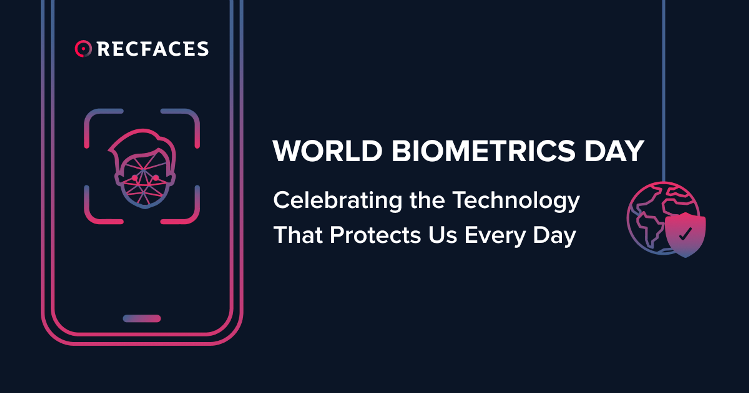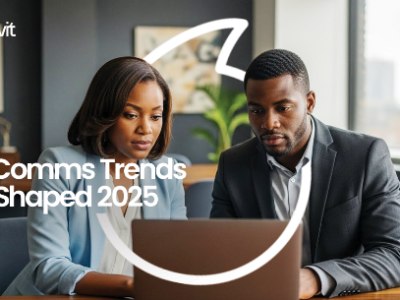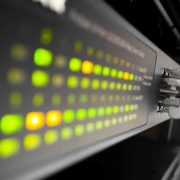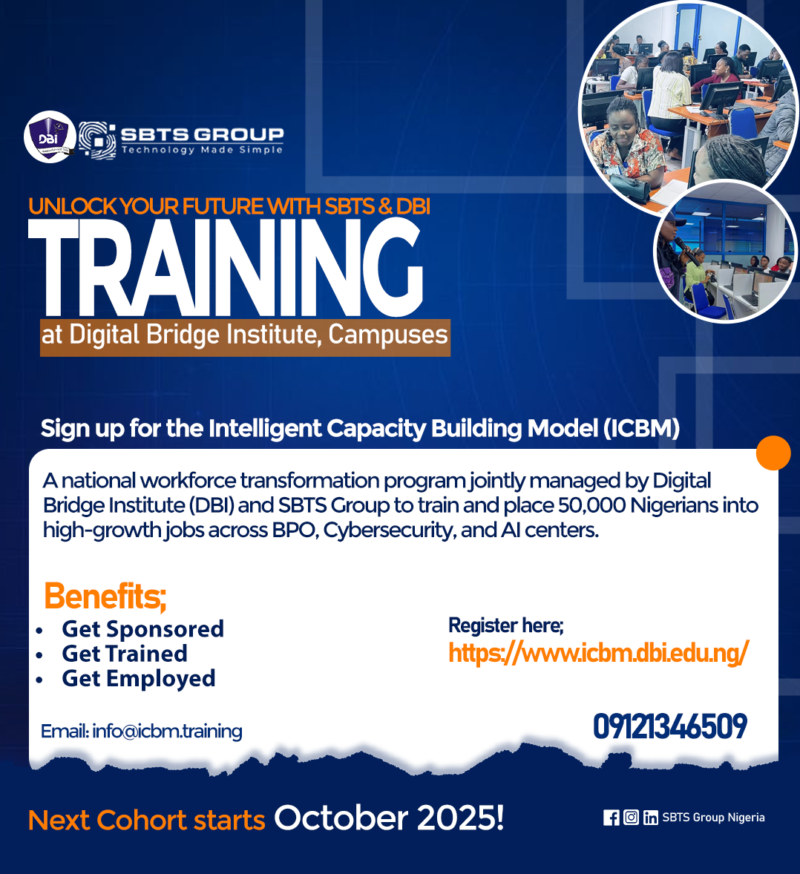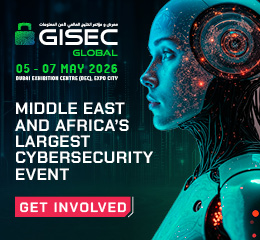Did you know? Over 90% of users believe that biometrics are more secure and convenient than traditional passwords. In fact, many are ready to leave the era of password-based authentication behind altogether.
RELATED: Nigeria to launch contactless biometric passport system in April 2025
In a world where names, numbers, and passwords define much of our identities, biometrics transcends these limitations. It’s a reflection of who we truly are, beyond the names we carry or the documents we hold. Biometrics offers something deeper: a connection to the very traits that make each of us unique. Our fingerprints, our irises, our faces—they are not just marks of identification but the keys to unlocking our personal world, eliminating the confusion of identity, and putting an end to the question of *who is really who*. Unlike passwords, which are distant and disconnected, biometrics is inherently part of us, a superpower given by nature.
Biometrics bridges the gap between identity and access, making sure that we are not just names in a system but the sole and irreplaceable keys to our own lives. We carry our security within us every day, every moment.
The Universal Language of Identity
Biometrics offers something truly remarkable: a constant language of identity that is independent of borders, cultures, and technologies. It’s a system based on the inherent uniqueness of each individual’s fingerprints that remain constant, faces that convey personal histories, and irises that reflect the singularity of our DNA. Therefore, identity becomes the key to the world of access that is secure and frictionless.
It is estimated that 245 million people in the U.S. already use biometric technology in their smartphones, with fingerprint scanning being the most popular. According to a recent global survey in 2021, 84% of consumers have adopted biometric authentication methods, signaling a widespread shift toward this technology.
Today, identity is probably as important as ever. The United Nations has acknowledged this increasing demand. It seeks to establish that every person in the world—especially in developing countries — gets effective identification by 2030. This objective makes identity management an indispensable task in the fluid technological world. Biometrics is one way to meet this challenge. It refers to a number of processes aimed at the identification of people by physical traits or behavior patterns. The main kinds of biometrics are fingerprint, iris, voice, and face recognition that tell a thousand stories and reflect the individuality of our DNA. Unlike passwords, which can be stolen or hacked, biometrics cannot be faked or duplicated.
In these, facial recognition is one of the most general-purpose and least invasive methods. As compared to other types of biometric authentication, facial recognition is easy to install in public areas with little or no interference from users while being highly accurate.
Zooming In: The Power of Facial Recognition Systems
What if the key to seamless security was a system that could recognize 1,000 faces in a second with almost perfect precision? Facial recognition is doing just that with 99.9% accuracy, is unbiased, and is reliable when trained on balanced data. Leading the biometric revolution, this technology is defining a future of seamless, frictionless convenience in addition to improving security.
FRS creates a digital map that is as unique as a fingerprint by examining the contours, bone structure, and important aspects of the human face. A crucial component of biometric facial recognition systems is liveness detection, which confirms that the person claiming to be who they say they are is a real, “live” person and not a static artifact like a picture, mask, or artificial imagery like deep fakes. By eliminating identity fraud and guaranteeing that only legitimate users are allowed access, this technology improves security.
The 2024 Brazilian Carnival was not just a celebration of culture and color; it was also a groundbreaking showcase of facial recognition technology in action. Deployed at mobile checkpoints, this innovative system enhanced security by accurately identifying individuals amidst the massive crowds. Its advanced capabilities proved essential for the carnival, showcasing its potential impact across various sectors.
AI-powered facial recognition technology is transforming several industries
AI-powered facial recognition technology is transforming several industries and offering new possibilities across a range of domains. Two primary applications are security and surveillance. Facial recognition improves public safety in this instance. Its ability to identify people of interest in real-time is crucial. Another area where this technology succeeds is access control. It makes time management and attendance easier. The automated nature of entry points ensures precise recording of employee hours. Moreover, it’s getting more typical to utilize facial recognition to provide access to specific tools or services. This increases security by granting verified people exclusive access to sensitive tools and systems. It streamlines identity verification processes in eKYC, enhancing efficiency and security across the BFSI sector. This reduces the likelihood of fraud and streamlines the onboarding of new customers. Lastly, two-factor authentication (2FA) and anti-spoofing measures work together to further increase security. This ensures that protected accounts and devices are only accessible by genuine users, which lowers the risk of identity theft.
These illustrations demonstrate the enormous potential facial recognition technology has to increase convenience and security in a variety of industries.
With 98 nations using face recognition and 60% of users depending on it once a week, it’s clear that the technology is becoming more and more popular. This tendency is anticipated to develop further, with an estimated 8.2 billion people predicted to pass through airports by 2037. British Airways, for instance, has shown how effective this technology can be in high-traffic situations by utilizing facial identification at departure gates to board 400 passengers in just 22 minutes.
Connecting Tomorrow: Balancing Privacy with Innovation
As we gear up for a world where biometrics are widespread, it is critical to find a balance between innovation and personal privacy. For biometrics to work, people need to trust the technology. By safeguarding data and being transparent about its use, we can ease concerns and build that trust.
Establishing confidence in security procedures requires people to be actively involved in creating useful policies and openly sharing information about how their personal information is used. Transparency not only protects private information but also creates a sense of community safety.
At its core, biometric technology aims to make people feel protected rather than just increase security. People are more inclined to trust when they feel safe. Whether accessing a bank account or passing through an airport, biometrics are shaping a future where we can live with greater peace of mind.
Embracing the Power of Biometrics for a Safer, More Connected World
We’ve used passwords, numbers, and names to identify ourselves for decades. These approaches, however, are not without problems. At least once a month, the majority of people forget their passwords, and they frequently try four different combinations before they finally figure it out. Many people, in their attempt to simplify, put their security at risk by using the same password for several devices and accounts, choosing a password that is simple to remember but equally simple for fraudsters to figure out. In 2018, 14.4 million people in the United States alone became victims of identity fraud.
Biometrics provides a revolutionary approach to these problems. As we integrate this technology into our lives, it’s clear that biometrics is not merely a distant possibility—it’s the future that’s already here, protecting us every day. Every face tells a unique story, a reflection of lives lived and dreams yet to be fulfilled. This innovative technology empowers us to create a world that not only honors our individuality but also nurtures our security and fosters trust among us all.
By unlocking our identities through biometrics, we move beyond simple recognition; we celebrate the remarkable individuals we are. In this transformative era, biometrics emerges as more than just a tool—it becomes our greatest asset, paving the way for a safer and more personalized future. Together, let’s ensure that every person is seen, valued, and protected for who they truly are.
“Beyond Recognition: Biometrics for a Safer Future.”
“In a world that is increasingly interconnected, facial biometrics isn’t just about enhancing security — it’s about redefining trust.” — Sukrit Varma, Global Marketing Partner, APAC and MENA regions, RecFaces
“Facial biometrics is paving the way for the future of security, where identities are as dynamic as the global environments they safeguard. This evolution isn’t just about protection — it’s about empowering individuals and enterprises to move forward with absolute confidence in an interconnected world.” — Eugenia Marina, Business Development Director, MENA region, RecFaces

